A Placemaking Journal
What This Innocuous Piece of Plastic Says About Our Suburban Future
Okay. So here we are, out west, working on a county-level comprehensive plan. It’s a big county, which means that each day we meet in the lobby of our centrally-located hotel, then journey caravan-style out to one of the various communities we’re serving over the course of a week.
Until we get where we’re going, it’s exclusively auto-intensive. So our options for a morning coffee stop are often limited to the Starbucks, conveniently located next door to the Applebee’s, in a strip mall outparcel at the border of the local arterial.
It’s there that I discover the inescapable ubiquity of this:
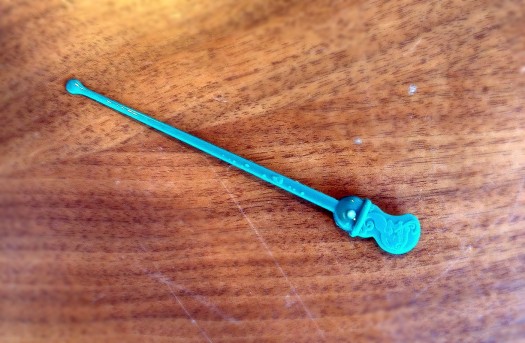
It’s not that I don’t know what it is. I do. It’s the little doodad you can use to plug the hole in your drink’s plastic lid, keeping the contents from sloshing around and making a mess. Especially in the car.
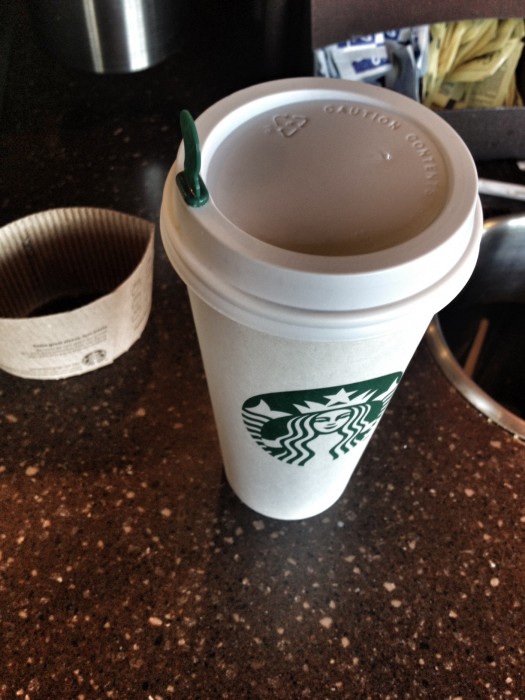
But here’s the thing: My familiarity with Starbucks is rooted in their urban models. The ones on Main Streets and in neighborhoods, which reflect the chain’s flagship location and play — as best a global brand can — the role of community living room. Ray Oldenburg, author of “The Great Good Place,” calls this kind of space the “third place.” Not your home, not your work, but somewhere in between. Where stature is leveled and all can experience a comfortable sense of belonging.
It’s what Starbucks calls “a place for conversation and a sense of community,” and it’s a pivotal part of their heritage story.
Some Distinct Differences
Yes, these traditional locations still have that same plastic doodad, but you need to seek it out. Maybe you have to ask for it or maybe it’s available on the bar, alongside the cream and sugar. Either way, the company’s expectation is obvious: People here are walking in and/or intending to linger a while. The doodad is the exception, not the norm. Why? Because the drink is just a slow-moving prop in a larger, more leisurely experience. Of enjoying. Or immersing. Or simply savoring a moment filled with the theater of humanity — the myriad, diverse folks connected to you by virtue of the broader community you share.
But contrast that with the suburban Starbucks model we experienced. There, every drink comes with the doodad. Every single one. The expectation is clear that you’re not sticking around. You’re just passing through — and quickly.
That got me looking around. And the (some not so) subtle differences I noticed kind of bummed me out.
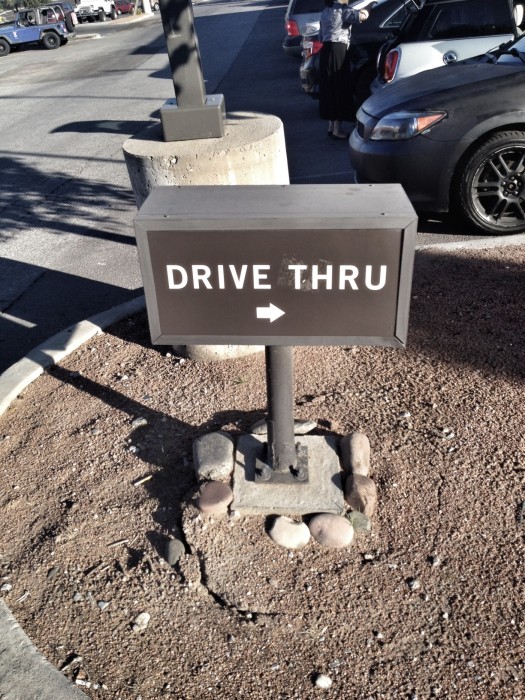
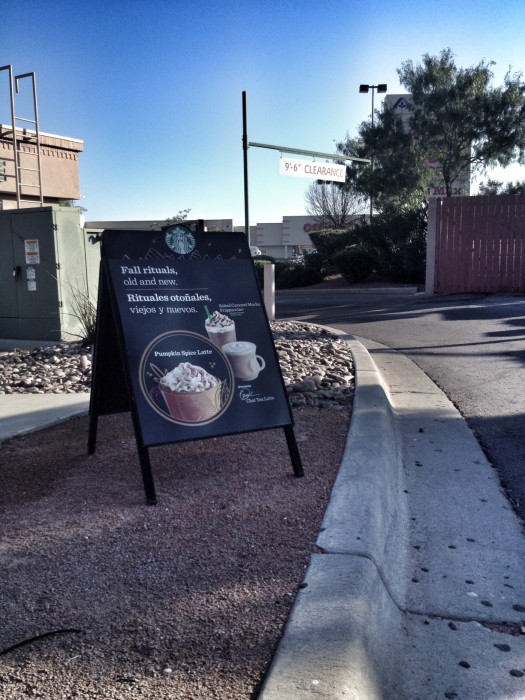
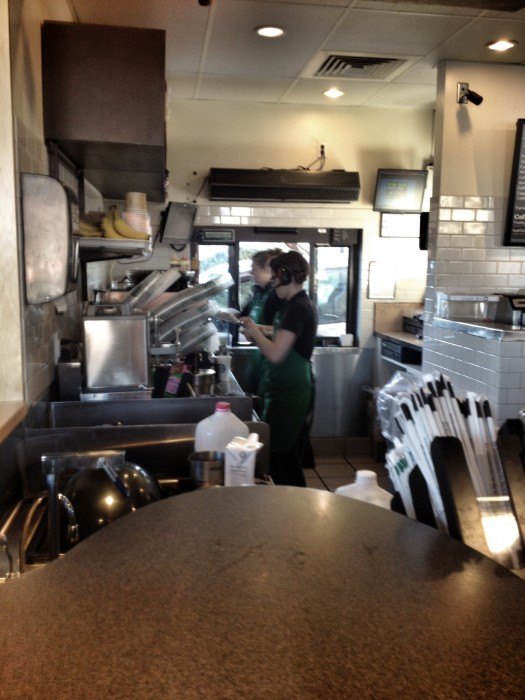
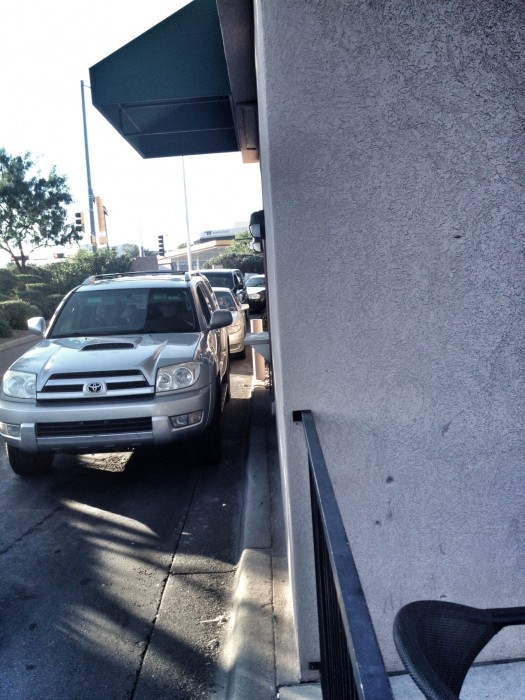
A few other things: They don’t play any music inside. They offer only a handful of tables. There are no children and only one guy on a laptop. No. One’s. Talking.
How can this, by any stretch of the imagination, be called a coffee shop?
Here’s Where It Gets Tricky
By now, someone’s surely poised to scold me, suggesting I stop pretending I’m European and get with reality. And you know what? They have a point. Starbucks isn’t in the business of elevating our culture. They’re in the business of making money. Which is why, when reaching out to the majority of Americans who live in the ‘burbs, I don’t fault them for acknowledging the surrounding context. In a pragmatic, capitalistic sort of way, I admire them for so shamelessly stripping out the experience they’re otherwise known for and simply putting a four dollar cup of coffee in someone’s hand as quickly and efficiently as possible so they can get on their way.
It’s what no shortage of people seem to want, right? And that’s something that makes me wary about the emerging task of suburbia’s inevitable physical redevelopment, and the necessity for what urbanists Ellen Dunham Jones calls “suburban retrofitting” and Galina Tachieva calls “sprawl repair.”
We know that creating urbanity — like cultivating coffee culture — in a sprawling context is hard. Really hard. And we know that, oftentimes, people simply like to continue doing things the way they’re doing them, for no other reason than the apparent ease of doing so. Which means that the political will necessary to do something difficult — to truly re-imagine and recreate our communities — will in many cases fail to materialize. And on and on we go.
Is the suburban Starbucks a canary in the coal mine, instructing urban reformers to abandon the ‘burbs altogether and simply direct their available energies towards the existing city instead?
I don’t know. But I do know this: Starbucks created an entirely new niche when they discovered people will pay vastly more for coffee if it’s delivered as an experience rather than just a product. Yet somehow, in growing to become synonymous with the typical American’s morning cup o’ joe, they’ve seemingly transcended that fact — evolving to a point where people — at least those trapped in our overall culture of commuter-based busyness — will now forego the experience altogether, yet still pay the premium.
What’s up with that? It certainly doesn’t bode well for taking on the status quo. It’s hard to effect change in an environment where there’s still so much money to be made delivering so little.
What do you think? Will America’s suburban populations eventually demand the compact, walkable, mixed-use patterns of our historic cities or will they prefer to remain as they are, auto-oriented for however long it lasts?
Personally, I’ll take my coffee in a ceramic cup, please. At a cafe table outside. And spare me the doodad.
–Scott Doyon
If PlaceShakers is our soapbox, our Facebook page is where we step down, grab a drink and enjoy a little conversation. Looking for a heads-up on the latest community-building news and perspective from around the web? Click through and “Like” us and we’ll keep you in the loop.









